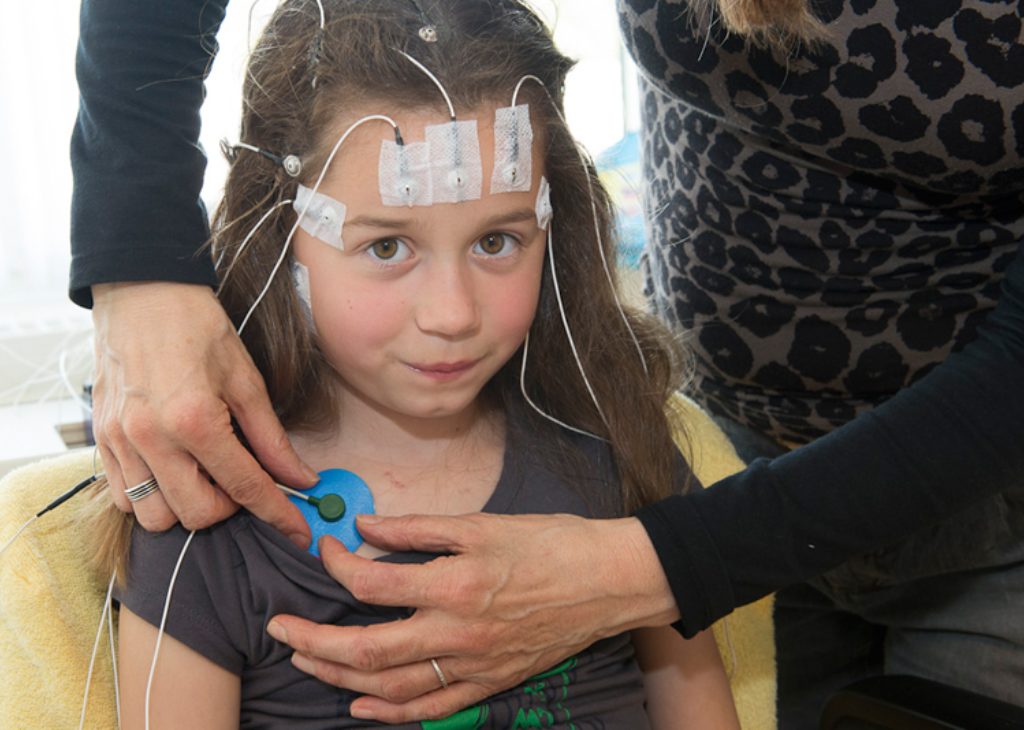In- depth, high-technological examinations

In the Clinical Neurophysiology and MRI department, EEG, polysomnography and MRI examinations are done. These contribute to a great extent to the diagnosis and the eventual treatment of the patient. In these examinations, Kempenhaeghe takes the extra step beyond standard.
Measurements last longer and are bigger in terms of the number of sensors used, while their sensitivity is also bigger. This, in combination with video monitoring, nursing observation, and the extra expertise of the lab technicians who report the measurements, yields more valuable information from the examinations. Moreover, our staff is specialized in supporting specific groups, such as young children and people with an intellectual disability. For them, extra facilities are available.
EEG
During an EEG (Electro-Encephalogram), the electrical activity of the brains is registered. In Kempenhaeghe special types of EEG examinations are done: 24-hour EEG registration with or without sleep deprivation (when the patient must stay awake a day and night), with or without video recording, or EEG registration combined with psychological examinations.
A special type of EEG is the seizure registration examination. Here, we trigger an epileptic seizure to determine the type of epilepsy or the source of epilepsy. These measurements can be very complex. Sometimes, electrodes are placed directly on or implanted in the brain.
MRI
In Kempenhaeghe specialized MRI examinations of the brain and the head can be done. We deploy various specialized MRI examinations, such as fMRI (whereby the specific functions of the brains are examined while the patient is asked to execute tasks in the scanner), and EEG-fMRI (in combination with EEG, to determine which areas in the brain are actively involved in the epilepsy). MRI under sedation is also possible, for instance for your or frightened children and people with an (intellectual) disability who cannot lie still.
(Video)polysomnography
Polysomnography is the golden standard for the diagnosis of various sleeping disorders. In Kempenhaeghe special types of (video)polysomnography are deployed: lengthier, with multiple and more sensitive sensors for the registration of more neurophysiological and cardio respiratory signals, synchronized with audio and video, with the continuous proximity and support of nurses and sleep lab technicians. This combination allows for the observation of subtle sleeping disorders that might explain the patient’s complaints.
Monitoring and, if necessary, setting up breathing therapy are done using secure clinical video-PSG.